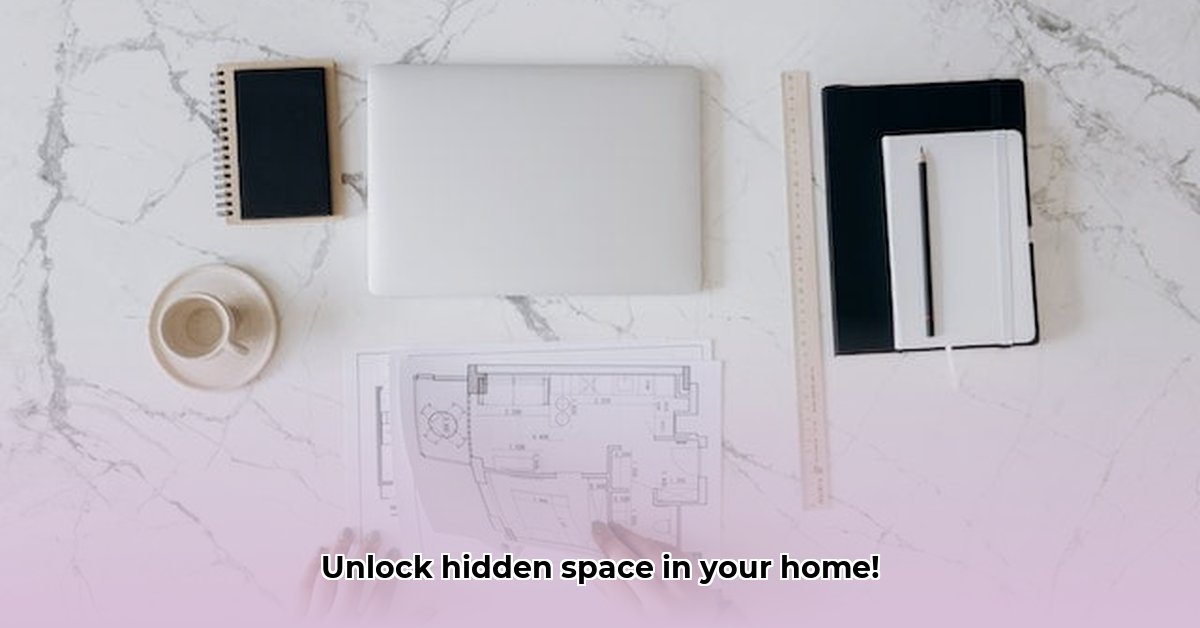Ever wished your home felt bigger than it actually is? Multi-level living might be your answer! It offers amazing opportunities to create a stunning, spacious home, but it also presents unique challenges. This guide will walk you through everything you need to know about designing and building a multi-level space, from initial planning to choosing the right professionals. We’ll cover practical tips, stylish ideas, and crucial steps to ensure your project is both beautiful and functional – a dream home, made real. For maximizing vertical space, check out these [high ceiling ideas](https://www.wavesold.com/high-ceiling-space-utilization). Get ready to transform your house into a home you’ll absolutely love!
Smart Multi-Level Interior Space Planning for Enhanced Living
Multi-level homes offer incredible potential, but they also present unique design challenges. Think soaring ceilings and expansive views, but also potentially awkward layouts and construction hurdles. This guide helps you navigate those challenges and transform your multi-level home into a masterpiece of functionality and style. We’ll walk you through the entire process, from initial brainstorming to adding the final flourishes. Imagine the “before” and “after”: a dated, disjointed space becoming a stylish, seamlessly connected home. That’s the power of effective multi-level space planning! It’s about carefully considered design choices that unlock the full potential of your home.
Planning & Design: Laying the Foundation for Your Dream Home
Before getting distracted by paint chips and fabric samples, you need a solid plan. This is where the transformative magic begins.
Step 1: Precise Measurements. Arm yourself with a reliable measuring tape and get to work. Every corner, every alcove, every quirky angle, every sloped ceiling – measure everything! Detailed, accurate floor plans are non-negotiable. Several user-friendly online tools are available to help you create them. Think of it as mapping the unique topography of your home. Crucially, note all load-bearing walls and the location of existing plumbing and electrical lines. This is your roadmap for smooth sailing.
Step 2: Zone Definition. How do you truly live in your home? Be honest with yourself. Do you require a dedicated home office? A vibrant kids’ playroom? A tranquil reading nook? Sketch these zones onto your floor plan. Now, visualize the flow between them. How will you transition between different levels? This informs the placement of staircases, a potential elevator (for the ultimate in luxury and accessibility!), or other essential architectural features. Consider future needs, too.
Step 3: Mastering the Art of Flow. This is paramount. Picture your daily routine: kitchen to dining area, bedrooms to bathrooms, living room to outdoor spaces. Eliminate potential bottlenecks and confusing pathways. A well-designed multi-level home should feel intuitive and natural, never like navigating a labyrinth. Strategically positioned stairs can optimize how you move through the house, unifying the different spaces.
Step 4: Material Selection. Carefully consider materials, keeping in mind durability, ease of maintenance, and sonic properties. Hardwood flooring might be ideal for the ground floor, while carpeting offers warmth and sound absorption in upstairs bedrooms. Visualize how different materials will look and feel in each zone. Explore sustainable and eco-friendly options, too.
Step 5: Lighting Design. Don’t underestimate the power of light! Natural light is fantastic, so maximize window size and placement. Artificial light lets you shape the mood of a room, and you should think about general lighting to let you see, task lighting for work, and accent lighting to give a room a distinctive look.
Here are essential considerations to remember during the planning phase:
- Prioritize spatial planning to align with your lifestyle and maximize the available square footage.
- Thoroughly evaluate the structural integrity of the building to anticipate and avoid potential construction challenges.
- Select materials that offer a balance of aesthetic appeal, durability, and functionality for long-term satisfaction.
- Develop a detailed lighting plan that maximizes natural light and incorporates a variety of artificial lighting options to create the desired ambiance in each space.
Construction & Implementation: Bringing Your Vision to Life with Expert Precision
This is where your thoughtfully crafted plans materialize.
Step 1: Assemble Your Dream Team. A multi-level project typically necessitates an architect, interior designer, and a general contractor—all with demonstrable experience in this type of construction. Resist the urge to DIY this! Online reviews and personal recommendations are invaluable; a highly skilled team is essential for success. Projects with experienced teams boast a significantly higher success rate.
Step 2: Smart Budgeting. Multi-level projects can be a significant financial undertaking. Develop a detailed budget that includes a contingency fund for unforeseen expenses. Maintain consistent communication with your contractor to adhere to budget and timeline constraints. Establish clear, agreed-upon communication channels and frequency upfront.
Step 3: Navigating Complexities. Plumbing and electrical work often present the most intricate challenges during renovations. Discuss these aspects thoroughly with your team from the outset. Even seemingly minor layout modifications can trigger significant behind-the-wall adjustments. Early planning prevents costly surprises.
Step 4: Safety Protocols. Safety must be your utmost priority. Ensure your project fully complies with all local building codes, with particular attention to staircases, railings, and lighting. Schedule regular inspections throughout the project’s duration.
Style & Aesthetics: The Art of Multi-Level Design for Visual Harmony
Multi-level living provides a fantastic canvas for showcasing your personal style and creativity.
- Open vs. Closed Concept. Decide whether an open, airy ambiance or more private, defined spaces better suit your lifestyle. Achieving the right balance is key.
- Layered Lighting. Strategically placed lighting profoundly impacts the ambiance of each level. Employ layered lighting techniques—task, ambient, and accent lighting—to highlight key features and create the desired mood.
- Creating Visual Flow. Employ consistent design elements—colors, textures, materials—to establish a sense of visual connection between the various levels. This prevents the spaces from feeling disjointed.
- Eclectic Style. Don’t hesitate to blend different styles throughout the multi-level home. Curate unique identities for each area while maintaining a sense of overall cohesion.
Choosing the Right Professionals: Your All-Star Team for a Seamless Build
Selecting the right professionals is paramount for a successful renovation. Here’s what to look for:
| Professional | Essential Qualities |
|---|---|
| Architect | Extensive multi-level design experience, thorough understanding of structural engineering principles, comprehensive working knowledge of local building codes and regulations, strong problem-solving skills, ability to translate client visions into detailed architectural plans. |
| Interior Designer | Superior spatial planning skills, well-developed aesthetic vision, excellent communication and collaboration skills, ability to source appropriate materials and furnishings, expertise in creating functional and visually appealing spaces that meet client needs and preferences. |
| General Contractor | Proven track record of successful project completion, strong reputation for quality workmanship, meticulous budget management skills, unwavering commitment to safety protocols and regulatory compliance, excellent communication and organizational abilities, ability to manage subcontractors effectively. |
The ultimate goal is to transform your multi-level space into a home that is stunningly beautiful and effortlessly functional. This guide provides a framework, but remember that each project is unique. Embrace the process, trust your team, and relish the journey of creating your dream multi-level home.
How to Safely Integrate Multi-Level Designs in Older Homes
Older homes possess unique charm but often require careful modifications to accommodate multi-level designs.
Here are crucial considerations to ensure safety:
- Prioritize accessibility features: Wider doorways and ramps improve accessibility for residents with mobility limitations.
- Enhance lighting: Improved lighting reduces the risk of falls and enhances visibility throughout the home.
- Install grab bars: Strategically placed grab bars in bathrooms and stairwells provide added support and stability.
- Consider a stairlift: A stairlift facilitates easier vertical navigation, particularly for individuals with mobility challenges.
- Plan for potential structural modifications early: Address structural considerations early on to ensure the safety and stability of the renovated space.
- Consult with experienced professionals: Specialized in-home renovations for older homes for safe and effective implementation of multi-level designs.
- Integrating multi-level designs requires a careful assessment of structural integrity and strict adherence to building codes.
Planning & Design: Laying the Foundation for a Safe Multi-Level Home Extension
Careful planning is the cornerstone of any successful renovation, particularly when safely integrating multi-level designs into older homes. Begin by conducting a thorough assessment of your home’s existing structure. Evaluate the load-bearing capacity of floors and identify any structural weaknesses that need to be addressed. This assessment will inform your design choices. Define your specific needs.
Think about traffic flow and ensure that movement is intuitive and safe for all residents, avoiding tight turns and awkward steps. Select materials that are durable and easy to maintain, particularly in high-traffic areas.
Construction & Implementation: Bringing Your Vision to Life Safely and Securely
Partnering with the right contractor is essential for a safe and successful renovation. Seek out someone with extensive experience in renovations, particularly in older homes. Discuss the structural implications of your design changes openly and transparently. Obtain multiple quotes and carefully review contracts before making a decision.
Budget realistically, factoring in potential unforeseen complexities like plumbing or electrical issues. Safety should be paramount; ensure that your contractor adheres to strict building codes and safety regulations throughout the entire construction process. Conduct regular inspections to ensure that progress aligns with your original plan and that any potential
- Backsplash For Gray Cabinets: Choosing the Right Backsplash Style - December 13, 2025
- Gray And White Backsplash: Ideas For Timeless Style - December 12, 2025
- Gray Kitchen Backsplash Ideas: Find Your Perfect Gray Tile - December 11, 2025









